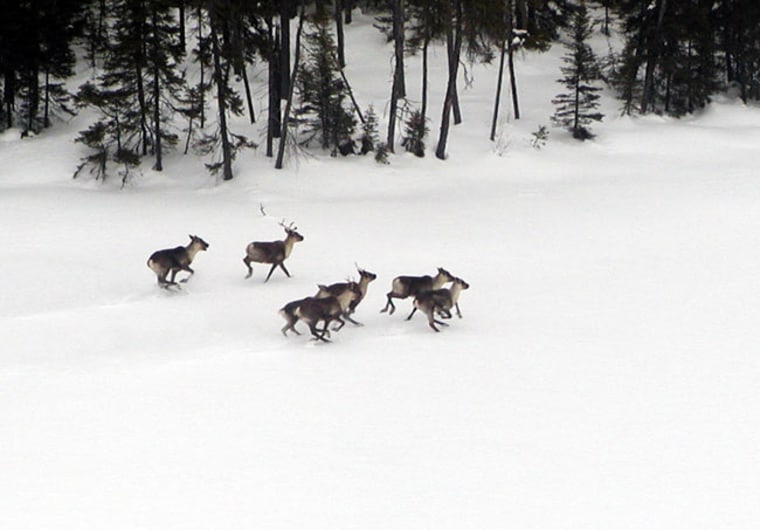Arctic reindeer live in the near perpetual night and then endless daytime that seasonally occur at the top of the world. These extreme conditions seem to have led the reindeer to abandon the internal clocks that drive the daily biological rhythms of mammals at lower latitudes, a new study finds.
In mammals, including humans, some hormone levels rise and ebb on a rhythmic daily cycle. This circadian rhythm influences various processes in the body, from the sleep/wake cycle to reproduction. The light-dark signals of day and night help drive these cycles, as does an internal body clock that works on a 24-hour cycle even in the absence of a light-dark switch.
But in reindeer, “it is this clock element that seems to be missing," said study author Andrew Loudon of the University of Manchester in England, referring to the internal ticker.
The missing clock doesn't have any effect on the sleep patterns of the reindeer, as they sleep after they eat, and tend to eat some 8 to 10 times a day, as is the case for all ruminant animals.
Loudon and his colleagues looked at levels of melatonin (a hormone that responds to the circadian cycle) in Arctic reindeer and found that they showed no natural internal rhythm of melatonin secretion. Instead, their hormone levels rise and fall in direct response to light and dark.
And studies of reindeer skin cells showed that two well-known clock genes don't oscillate the way they do in other organisms as a way of keeping time.
"We suspect that they have the full range of normal clock genes, but these are regulated in a different way in reindeer," Loudon said.
The findings of the study, detailed online on March 11 in the journal Current Biology, initially came as a surprise, but the researchers now suspect that similar patterns could be seen in other Arctic animals.
"Our findings imply that evolution has come up with a means of switching off the cellular clockwork," Loudon said. "Such daily clocks may be positively a hindrance in environments where there is no reliable light-dark cycle for much of the year."
Because the Earth is tilted on its axis, the Arctic is pointed toward the sun during the summer months, which keeps the sun perpetually above the horizon during this time. During the winter, the opposite is true, and the Arctic is plunged into months of darkness. The same is true of the Antarctic.
Instead, light and dark signals that come during the year's two equinoxes (fall and spring) could be enough to jumpstart certain processes in the reindeer, such as the annual reproductive cycle, the researchers say.
Just how many body processes are affected by this unusual development isn't certain.
"We do not know how extensive the loss of clockwork is in reindeer," Loudon told LiveScience. "There may still be a clock in there ticking away, but we have not been able to find it. It looks like the molecular clock is switched off at least in skin cells (and frankly I suspect elsewhere as well)."
